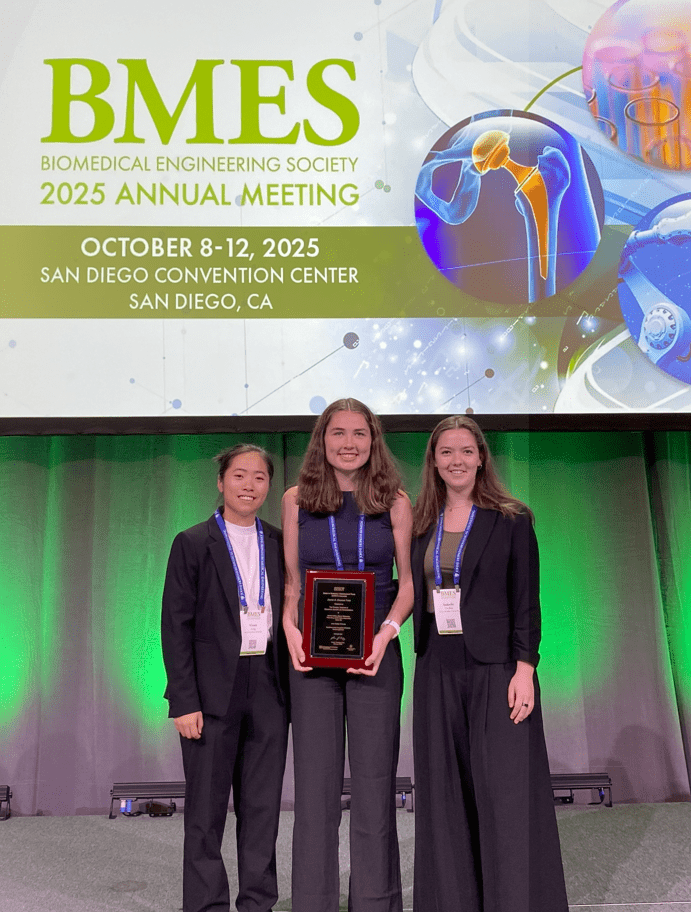A team of undergraduate biomedical engineering students has won the Krosnick Prize at the National Institute of Health’s 2025 Design by Biomedical Undergraduate Teams (DEBUT) Challenge for a new device that helps doctors quickly recognize hemorrhagic shock in pediatric patients. The award recognizes exceptional undergraduate innovations in biomedical design that are producing technological solutions to a broad spectrum of unmet health needs.
Managed by the National Institute of Biomedical Imaging and Bioengineering (NIBIB) and VentureWell, the team, named ShockSense, received a $20,000 prize at the Biomedical Engineering Society (BMES) annual conference on October 10 in San Diego, CA.
Hemorrhagic shock is one of the leading causes of preventable death in pediatric trauma, yet early detection remains difficult. The current assessment tool requires clinicians to perform mental math in a constantly changing trauma environment.
To solve this problem, the ShockSense team developed a real-time decision support device that automates shock recognition while improving accuracy. The device can be integrated with any hospital monitor and uses information available in the trauma bay to display color-coded risk levels and a patient’s shock status.

